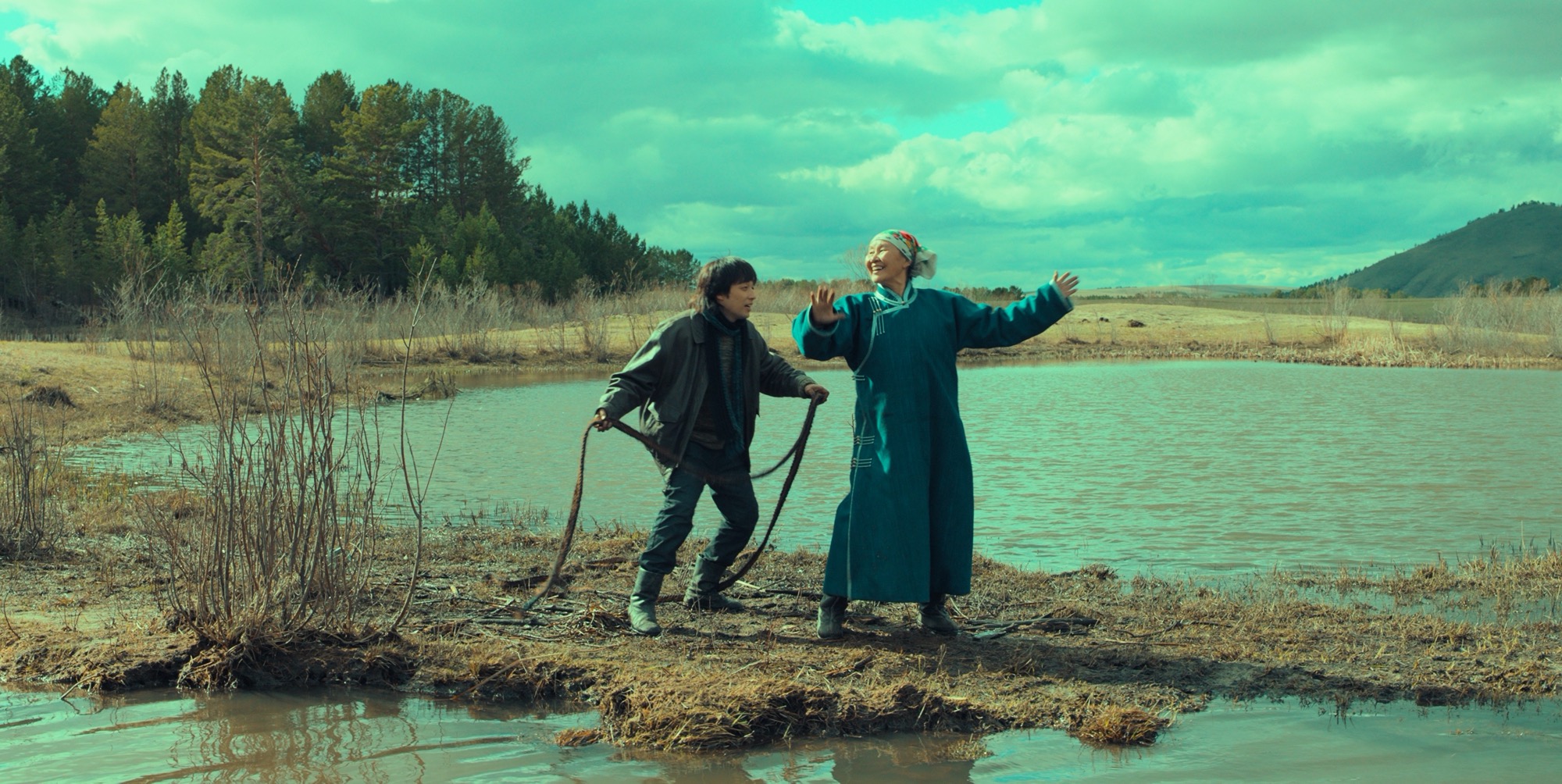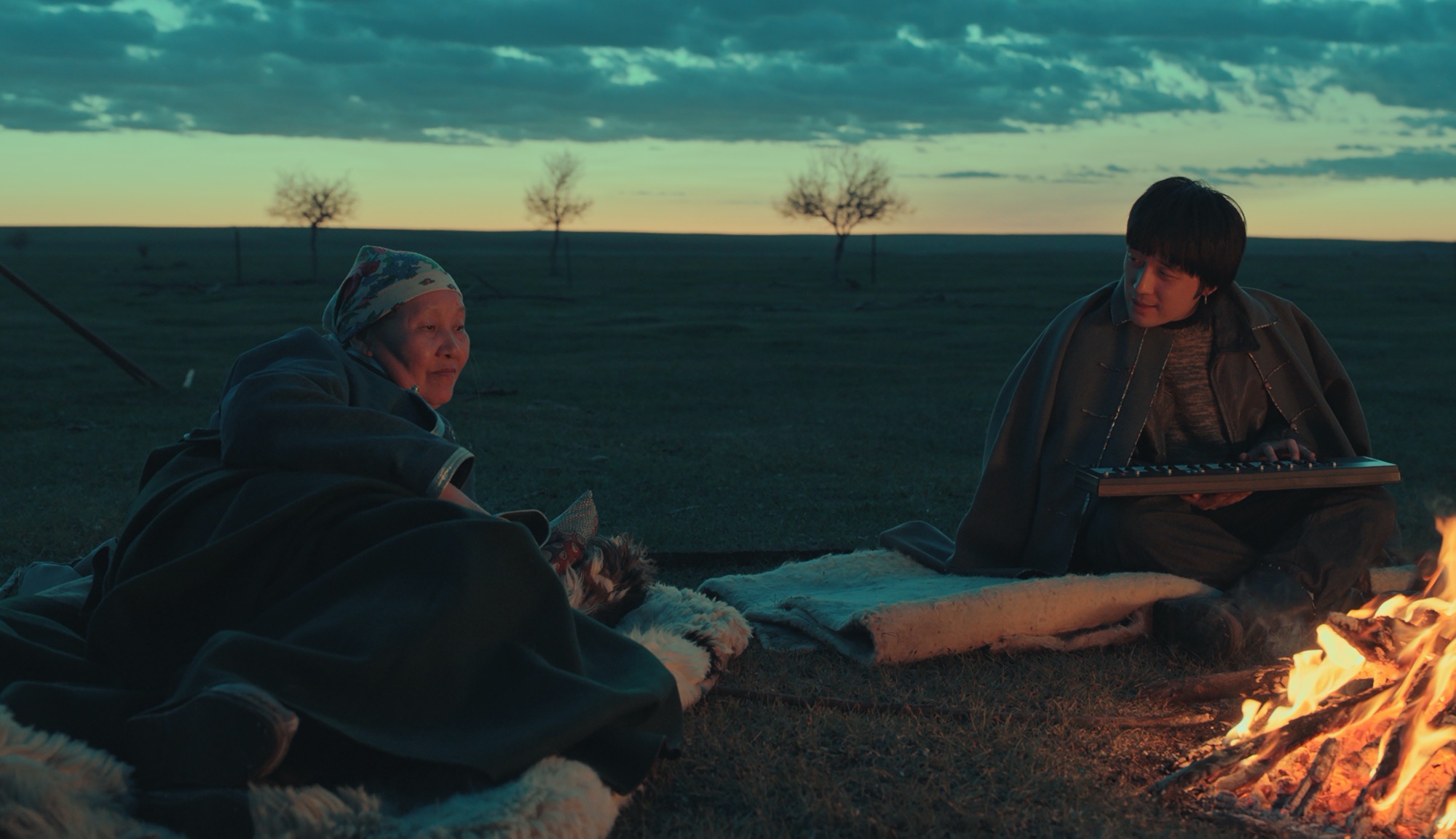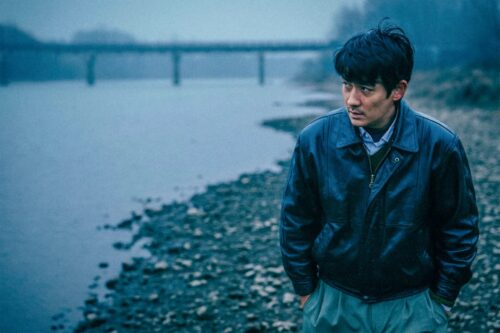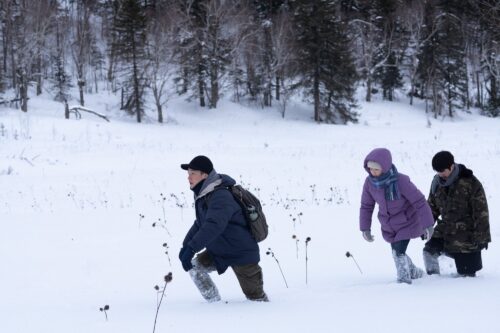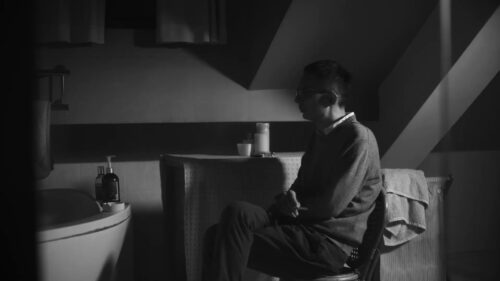Steppe songs on the silver screen: Q&A with Qiao Sixue, director of ‘The Cord of Life’
Inner Mongolian filmmaker Qiao Sixue discusses her debut feature, the musical and cinematic tradition of ethnic Mongolians in China, and the emergence of the “Inner Mongolian New Wave.”
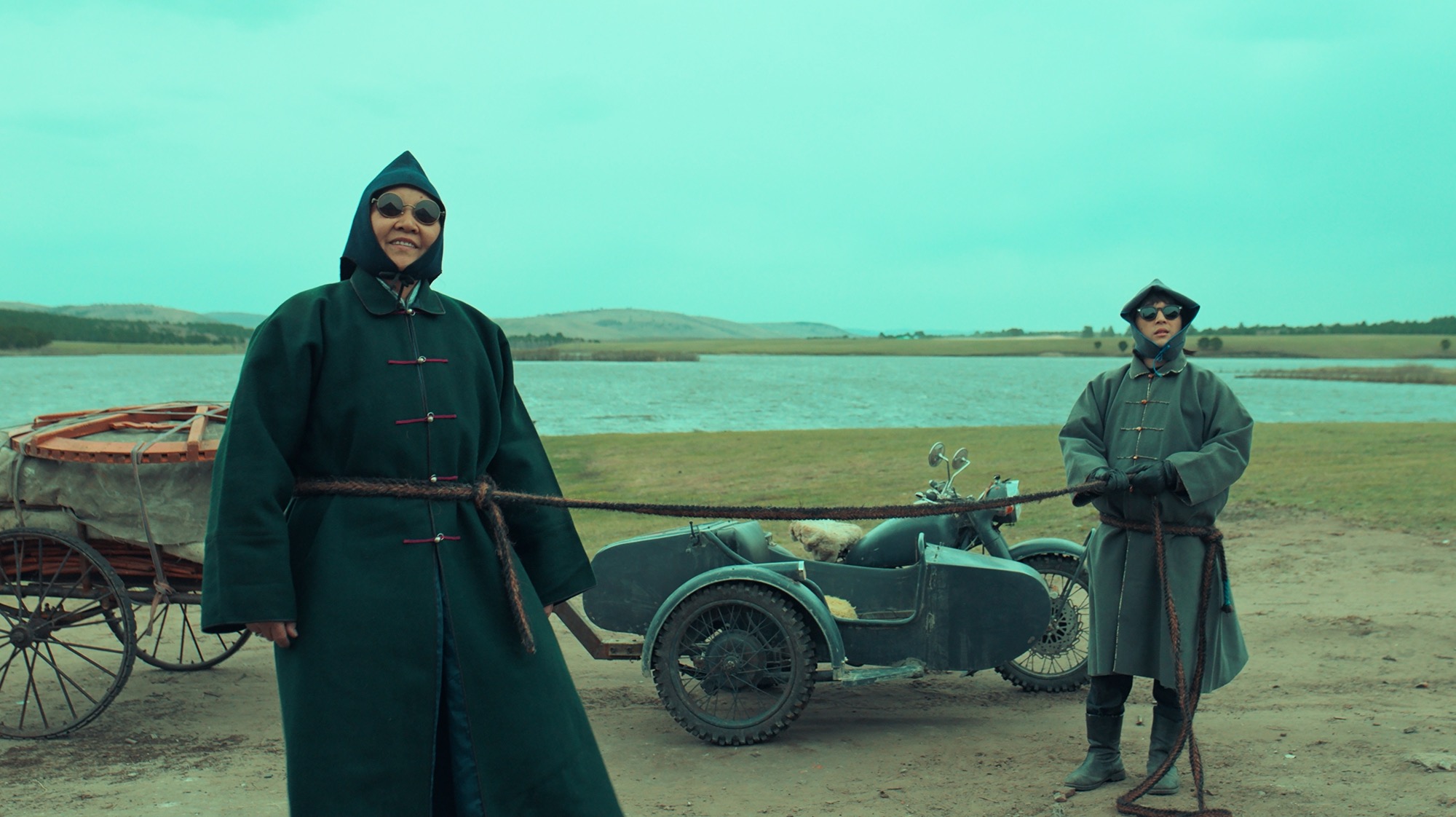
Although Mongolian ethnic minority cinema in China hasn’t enjoyed the same popularity and acclaim as its Tibetan counterpart in the past two decades, that may be changing now.
Heralding this change is The Cord of Life, a family drama set in the Hulunbuir grasslands in northeastern Inner Mongolia, and Qiáo Sīxuě 乔思雪, the film’s writer-director of Daur ethnicity, a Mongolic people who form one of China’s 56 officially recognized ethnic minorities.
The Cord of Life had its world premiere last October at the prestigious Tokyo International Film Festival, which also selected Tibetan newcomer Jigme Trinley’s One and Four for its main competition the year before.
The Mongolian-language film tells the story of Alus, a dejected electronic musician, and his mother, Naranzug, who’s suffering from Alzheimer’s disease. When Naranzug’s condition worsens, Alus takes her back to their native steppe and ties her to himself with a rope so that she won’t wander off and get lost. As they reconnect through the symbolic umbilical cord, their search for home takes a more emotional and cultural turn.
While The Cord of Life is Qiao’s first attempt at making a full-length film, it benefits from an experienced cast and crew. Badma (巴德玛 Bādémǎ), who plays the mother, previously starred as the protagonist in Urga, a 1991 French-Russian film that won the Golden Lion at Venice Film Festival and was nominated for an Academy Award for Best Foreign Film.
The film also boasts stunning and creative visuals — including an opening sequence that juxtaposes the title with an aerial shot of a long river stretching over a steppe — for which it won the Best Artistic Contribution award at the Hainan Island International Film Festival last December. The film’s director of photography Cáo Yù 曹郁, who previously lensed award-winning films such as Kekexili: Mountain Patrol (2004) and City of Life and Death (2009), also served as one of its executive producers.
Currently playing in cinemas, the film recently wrapped up its roadshow theatrical release (路演 lùyǎn). This exhibition and promotion strategy — screenings in specific cinemas and cities across the country, followed by a Q&A with the cast and crew and gift posters — has become increasingly common in recent years, especially for Chinese arthouse films that normally struggle at the box office.
The China Project spoke with Qiao after a screening of The Cord of Life in Nanjing. The conversation has been lightly edited for brevity and clarity.
The China Project: When did you start thinking about studying filmmaking and how did you get started?
Qiao Sixue: I grew up in a very small town in Inner Mongolia. Back then, the only way I could access the outside world was to watch movies. When I was in primary school, my parents would rent videotapes every week. Then in middle school, I started using my pocket money to rent DVDs. The young people of my generation probably all had the same experience. Rental DVDs were very cheap: you could deposit 10 yuan and rent one disc for one yuan. I watched a lot of movies back then, at least five or six each week.
Then later I decided I wanted to study filmmaking in the future because I felt that cinema has given me many different ways and perspectives to view the world. You can come into contact with other cultures and peoples from different places through cinema. It offers some emotional experiences that you can hardly obtain from life. So, I gradually decided that I’d use this medium to express myself and the world as I see it. After high school, I went to France to attend a film school [3iS Paris] and made several short films both during and after my studies.

You mentioned during the Q&A in Nanjing that the original title of the film was Roaming on the Blue Steppe. Why was it changed?
The original script I wrote was more like an essay film. Its narrative was not as linear and didn’t focus that much on the characters themselves. So, the title Roaming on the Blue Steppe fit that script better. Then, I showed it to the two executive producers at Bad Rabbit Pictures [Yáo Chén 姚晨 and Cáo Yù 曹郁] and made some revisions. The final script focused on the mother-son relationship, and the title The Cord of Life better reflects the spirit of the film and what it wants to convey. The producers also found out that the word for umbilical cord in Mongolian has different but related meanings, such as “connection.” But in Chinese, the word’s meaning or usage aren’t as rich. So, we thought that if we use this word as the Chinese title of the film, it’d in fact expand and enrich the word’s meaning to some extent.
The dialogues in the film are all in a Mongolian dialect. I speak the Khalkha dialect and can understand about 70% of the film. Was the script also written in Mongolian?
Actually, the entire script was written in Chinese. Although all the actors can speak Mongolian, there were crew members who can’t, so the script needed to be written in a language that everyone can understand. Before each scene, I’d sit together with the cast and we’d translate the spoken lines into Mongolian, try to make them more colloquial and authentic, and discuss how they should be delivered on camera.
The Mongolian dialect spoken in the film is Barga. In the area where I grew up in Hulunbuir [a region in northeastern Inner Mongolia], there are three main Mongolian tribes: Old Barga, New Barga, and Buryat. I actually don’t speak or understand Mongolian, but I grew up around people who do. So, this language is very familiar to me and I feel emotionally close to its sound. For me, making this film using local dialects and local actors is an act of recording these people in this specific period of time. To do this through film is very important and meaningful to me.
You said that the cast members can speak Mandarin as well, but how do you communicate with them and direct them in terms of their performance and line delivery?
My assistant director, who studied acting before, is of Mongolian ethnicity and is from the Barga tribe. We’d first discuss the rough idea of each line, how the actors should say it, and any possible problems in the delivery. Also, we’d go over the translated lines and decide whether the expressions are colloquial enough. If some parts don’t feel quite right, we’d also bring the actors into the discussion and make adjustments on the spot. But to be honest, most of the lines and dialogues, in terms of content, were already finalized during pre-production. During shooting, it’s more about seeing whether the actors’ emotions are appropriate in a given scene than about being able to fully understand the language. So, most of our communication on set revolved around the actors’ emotion and expression rather than the content of the lines.
Did working with both an experienced actress such as Badma and first-timers, Yider and Nahia, pose any difficulties? I was reminded of the casting of actress Hǎi Qīng 海清 and the director’s uncle and farmer Wǔ Rénlín 武仁林 in last year’s Return to Dust.
Despite being a very experienced actress, Badma actually lives a very simple life. The first time I went to see her, I didn’t feel at all that she’s an actress. Like ordinary herdswomen, she often drives back to the countryside to work there. She’s a middle-aged woman but you can see that her expression still has that naïve and lovely side of a child. Her personality and temperament had a lot to do with why she was cast for the role. Also, she’s a very intelligent actress. As long as you explain and she grasps the central idea of a scene, she can complete the performance much better than you expected. So, it actually didn’t take much effort to direct her.
Yider used to be a singer and he’s indeed quite charming on stage, but this charm wasn’t enough when he’s on set under the gaze of several cameras. He’d sometimes be in a very obvious state of acting even when doing simple, everyday actions. The task for me was to help him get out of that performative state and return to his own off-camera state, which actually had a lot in common with his character.
At first, he and Badma were unconvincing as mother and son. Lucky for us, however, it just so happened that we were filming in chronological order and the sense of alienation between them was actually very close to the state of their characters in the beginning of the film. After the first few days of shooting, I arranged Yider and Badma to eat, stay, and travel together every day. The two of them gradually developed a kind of emotional relationship, like the bond between mother and son. So in the final bonfire scene, Yider was shedding tears for real. He’d been accumulating these emotions for some 45 days and now he had to bid farewell with his “mother,” the crew, and his character, and it all came out in that scene. Seeing him getting into character over time and particularly that final performance moved everyone.
Did you know Yider before writing the script?
Yes. To some extent, the character of Alus was written according to his likeness. I really appreciate Yider’s philosophy and ideas on music. He learned how to play the morin khuur [horsehead fiddle] as a child and, after many years, tried electronic music in Beijing. But instead of putting the traditional and the modern into a state of opposition, he began to combine electronic music with traditional instruments to make new music in a way that is most acceptable to the public. In fact, it’s very similar to what I wanted to do with my film. I don’t want to repeat what’s been done and document things that won’t change even after 500 years. Young people have to have their own way of doing new things. If we’re still singing the exact same tunes and playing the exact same music 200 years from now on, that’s just like parroting. It wouldn’t be true heritage and development. These things are not immutable.
It’s interesting how you mention that culture is not immutable. In the final bonfire scene in The Cord of Life, a group of characters suddenly start dancing and singing together. It reminded me of the earliest Mongolian ethnic minority films, such as Storm on the Border (1940) and Victory of Mongolian People (1951), that all invariably and stereotypically depict Mongolians as being skilled at singing and dancing. Were you thinking about these similarities when you were making the film?
Actually, I wanted to execute that scene differently. In my mind, it was a more surreal scene. But to be honest, our production and funding were limited, so the more realistic final version we have in the film can give the feeling that you just mentioned. But the main task of the scene is a farewell between the mother and the son, which is quite sorrowful, so I hoped to contrast that with a lively celebration. I don’t think there’s a specific problem with singing and dancing per se. It’s just that the scene could have gone further in terms of its audiovisual presentation. It is indeed a slight regret of mine that the scene isn’t sufficiently different [than the traditional ones].
The Cord of Life had its world premiere at the Tokyo International Film Festival and domestic premiere at the Hainan Island International Film Festival. How was the film received in these different contexts?
The experience at TIFF completely exceeded my expectations. The people who came to see the film were mostly scholars and some older viewers, and their response was particularly enthusiastic. I heard a lot of laughter during the screening and a lot of sobbing sounds at the end. After the screening, many people stood up and shared their thoughts and feelings. A mature audience like that must have gone through many separations in their lifetime and some may even have bid farewell to their parents. Coming to the film with this kind of personal experiences, their viewing experience was probably richer and more profound.
At HIIFF, however, most of the audience were young people working in the film industry. Partly because their life experiences are limited, some of them judged the film more from a purely cinematic perspective. So, the audience reception was understandably not as enthusiastic as in Tokyo. But when the film was released in cinemas recently, the audience reaction changed again. Because filmgoers [outside the festival context] come from diverse age groups and backgrounds, their overall emotional experiences while watching the film are relatively richer, more like the reception at TIFF.
The term “Inner Mongolian New Wave” emerged a few years ago and has become popular again following the release of The Cord of Life. What do you think about this label? If there’s such a group or movement, do you consider yourself to be a part of it?
I’ve actually recently been pondering why a group of young directors suddenly emerged from Inner Mongolia in the past five to seven years. It may be related to our experience growing up. Like I mentioned earlier, our generation has seen the transition of watching movies on videotapes to DVDs to the internet. We all listened to rock music and went to concerts. We also think a lot about the changes in our times and our home in Inner Mongolia. Maybe our generation is just standing up and expressing ourselves now that we have the ability to do that. I haven’t delved into the matter very deeply. It could also just be a very accidental occurrence.
But to be honest, the five of us [Xīn Yùkūn 忻钰坤 (The Coffin in the Mountain, 2014), Degena Yun 德格娜 (A Simple Goodbye, 2015), Zhāng Dàlěi 张大磊 (The Summer is Gone, 2016), Zhōu Ziyáng 周子阳 (Old Beast, 2017)] have very little in common in terms of our work. Everyone has their own unique style and scope of expression. The regional aspect is important. My film has more ethnic elements because I was exposed to ethnic minority cultures for a long time and in close proximity, while the four of them spent more time in the city. But I think there’s some vastness and loneliness that come from the grasslands of Inner Mongolia that find expression in our films. That might be a little different from other regions, but it’s hard to say. Perhaps some commonalities can be found with more research and analysis.
What are your plans for the near future? Have you already started working on a new project?
I’m currently preparing a romance film. Most of the story may still take place on the Inner Mongolian grassland, but unlike The Cord of Life, its ethnic elements would probably be weakened. We’re also looking into the possibility of bringing The Cord of Life to Mongolia. We’re eager to screen the film and exchange creative ideas with filmmakers and audiences there.
The Cord of Life is currently screening in cinemas in China and is available for streaming on iQIYI.
